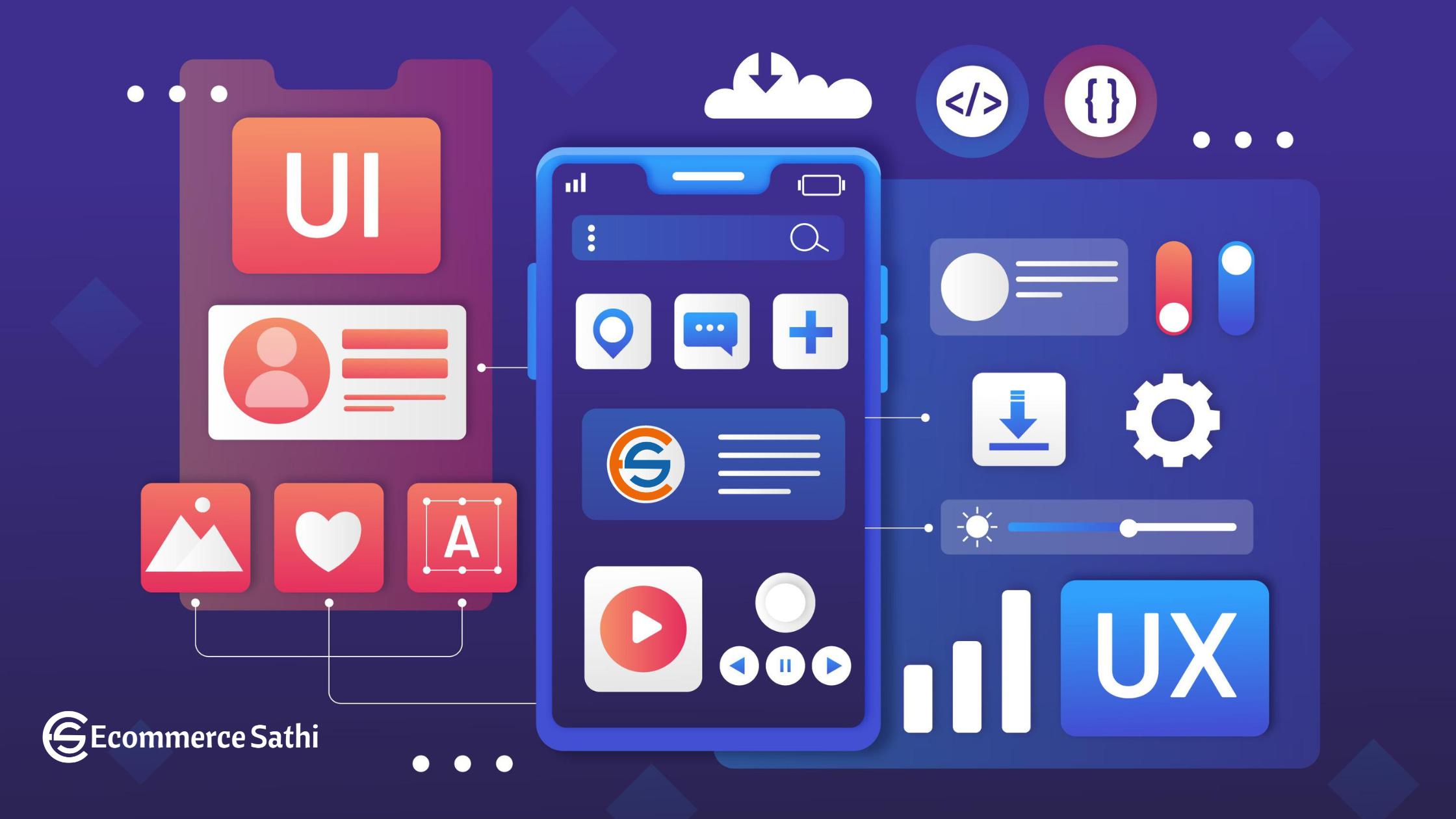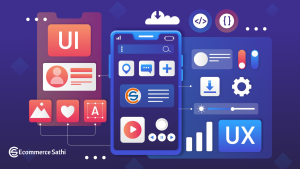Welcome to Ecommerce Sathi Pvt. Ltd.! If you’re interested in starting or advancing your career in UI/UX design, you’re in the right place. UI/UX design is a dynamic field that combines creativity with functionality to create engaging digital experiences. Here’s a complete guide to help you plan and direct your journey from a beginner to an expert in UI/UX design.
Understanding UI/UX Design

UI (User Interface) Design focuses on the visual elements of a product, such as layouts, colors, and typography.
UX (User Experience) Design, on the other hand, is concerned with how users interact with a product and ensuring that the experience is natural, insightful and satisfying. Both aspects are interconnected and crucial for creating a harmonious and engaging user experience.
Starting Your Journey: Beginner Level
1. Learn the Basics
Your first step in UI/UX design is to build a solid foundation. You can start by learning key concepts such as:
- User Research: You should understand what users need, their behaviors, and how they interact with products. This knowledge helps you design with real user needs in mind.
- Wireframing and Prototyping: Wireframes are simple, low-fidelity sketches of a design, while prototypes are interactive models that simulate user interactions. Both are crucial for planning and testing your designs.
- Visual Design Principles: You have to study about color theory, typography, and layout to create visually appealing and functional designs.
There are numerous online resources available, including tutorials, blogs, and courses, that can help you learn these basics.
2. Get to Know the Tools
UI/UX designers use various tools to create and test their designs. Here are some popular ones:
- Sketch: It is excellent for designing user interfaces and creating layouts.
- Adobe XD: It is useful for wireframing, prototyping, and creating interactive designs.
- Figma: It is ideal for collaborative design work, allowing multiple users to work on a project simultaneously.
- InVision: It is great for prototyping and gathering feedback on your designs.
Familiarizing yourself with these tools will help you efficiently translate your design ideas into reality.
3. Build Your Portfolio
Your portfolio is your chance to showcase your skills and creativity. Start by working on small projects, such as redesigning existing websites or creating concepts for new apps. UI/UX design include not just the final designs but also your design process-how you researched, planned, and revised on your ideas. A well-documented portfolio demonstrates your ability to handle real-world design challenges.
Advancing Your Career: Intermediate Level
4. Gain Practical Experience
To advance your career, seek out internships or entry-level positions that allow you to apply your skills in real-world scenarios. Working on actual projects will teach you how to handle client requirements, collaborate with teams, and navigate the complexities of design and development.
5. Keep Learning
UI/UX design is a rapidly evolving field. You must stay updated with the latest trends, tools, and techniques by:
- Reading Blogs: Follow design blogs to learn about new trends and best practices.
- Attending Webinars: Participate in online seminars and workshops to enhance your skills and knowledge.
- Taking Courses: Enroll in advanced courses to deepen your expertise in specific areas of UI/UX design.
Continuous learning will keep you competitive and informed about industry developments.
6. Find Your Specialty
As you gain experience, consider specializing in a particular area of UI/UX design. This could be mobile app design, user research, interaction design, or another niche. Specializing can make you more attractive to employers and allow you to become an expert in a specific area of interest.
Becoming an Expert: Advanced Level
7. Master Advanced Skills
To reach an expert level, you need to excel in advanced design techniques:
- Advanced Prototyping: Use tools like Principle or Framer to create detailed, interactive prototypes that closely resemble the final product.
- Data-Driven Design: Take advantage of user feedback and analytics to inform your design decisions and improve user experience.
- Accessibility: Ensure your designs are usable by people with disabilities, adhering to accessibility standards and guidelines.
Mastering these advanced skills will set you apart in the field and enable you to handle complex design challenges.
8. Share Your Knowledge
Teaching others is a powerful way to strengthen your own expertise. Mentor junior designers, contribute to design forums, or start your own blog to share your insights and experiences. Sharing knowledge not only helps others but also provides you with new perspectives and ideas.
9. Network and Collaborate
Building a strong professional network is crucial for career growth. Attend industry events, join professional organizations like the Interaction Design Association, and collaborate with other designers and professionals. Networking can lead to new opportunities, collaborations, and career advancements.
10. Stay Passionate and Curious
Finally, keep your passion for design alive. Stay curious about emerging trends, new technologies, and innovative design methods. Your enthusiasm and curiosity will drive your continuous improvement and help you stay ahead in the ever-evolving field of UI/UX design.
At Ecommerce Sathi Pvt. Ltd., we believe that with dedication and the right approach, anyone can build a successful career in UI/UX design. By following this guide—from learning the basics to mastering advanced skills—you can navigate your journey from a beginner to an expert. Stay committed, keep learning, and enjoy the exciting world of UI/UX design!





